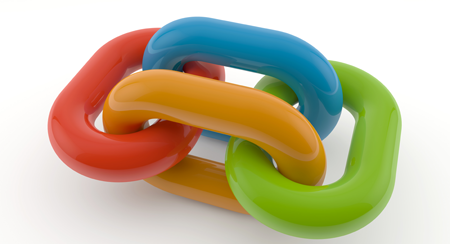100 Tips to Build an Ecommerce Startup From Scratch

With big opportunities and low barriers to entry, starting an ecommerce business is a viable option for today's budding entrepreneurs. What's more, there's a market of end-users who are eager to shop online, for its wide selection and convenience.
This creates a win-win situation for the customer and for the business. Here are some tips that help you get a holistic view of what all you need to get started.
1. Research well about what you are going to sell and plan for it accordingly.
2. Choose the right business model. You can choose from a business-to-business (B2B) or a business-to-consumer (B2C) model.
3. Strategize the buying process effectively. Selecting the right set of vendors is essential.
4. Consider choosing the option of getting your vendors to supply directly to your customers.
5. Plan for new products. Product improvements must be done from the very beginning and must be a continuous exercise.
6. Choose the right ecommerce platform for developing your website (read, "Quick Guide to Selecting an Ecommerce Platform").
7. Create a niche for yourself and focus on it. You may want to focus on perfumes or jewelry or clothing or any other.
8. Define the unique selling proposition (USP) of your store and position it effectively.
9. Work on providing a great experience to the consumer. The more engaging the store is, the more the chances of a purchase.
10. The store should be optimized well for easy navigation and usability. The users should understand how to find the products they are looking for.
11. As a business owner, one has to ensure that search engine optimization is being done from the very beginning. This is very important to ensure that the website searchable to the intended audiences. (Read, "Where to Get Your First 44 Backlinks.")

12. The consumer activity and profiling must be analyzed well. They should then be sent out appropriate marketing messages.
13. The products, their descriptions and their prices must be communicated very clearly on the website. This is important for easy navigation.
14. Be open to mistakes and be prompt in rectifying them.
15. Keep renewing the design and user-experience for your store.
16. Feedback forms and solutions are an important way to know about consumer needs and preferences.
17. Email campaigns to new and existing database are essential for reaching out to new customers and retaining the existing ones.
18. Delivery time is very important while selling products on an ecommerce store. Providing early and timely delivery of products and promoting this feature well, is extremely important.
19. Customer support is also essential to your startup. In case a product does not get delivered on time or is not in proper shape, an action team must be always available, for problem redressal.
20. Serious efforts must be made toward content and social marketing to build a loyal follower base.
21. Paid marketing campaigns must not be ignored as it helps in reaching out to new audiences.
22. It is essential to understand the number of users who abandon the site completely. Analyzing the reasons help in controlling this rate and improving engagement.
23. Pricing of products must be revised on a regular basis. Thorough research and analysis must be undertaken and prices must be reviewed and revised periodically.
24. Get your hottest products to be most accessible. Get your users to see these on the homepage of the website.
25. Be original in your products, pricing and communication. Build your reputation by being original.
26. Review and revise the marketing plan on a quarterly basis.
27. Gather as much data about site visits, as possible. Detailed analysis helps in gauging each click and devising content strategies accordingly.

28. Work on getting evangelists and satisfied consumers for your Web store.
29. Fast decision making helps in making changes to the site, quickly.
30. Discounts offered to customers must be limited and for short durations.
31. Add attention grabbing copy on the Web pages to improve the level of conversions.
32. Social listening tools help in knowing conversations about your brand and devising campaigns accordingly.
33. Giving introductory and referral discounts help in acquiring more customers for your website.
34. Always keep a short, memorable and understandable domain name to get your users relate and remember for a longer time.
35. Customization options for products and services help in differentiating the offering and getting more takers for the brand.
36. Use online tools for invoicing, CRM and SCM for better productivity of these processes.
37. Hire dedicated remote developers to maintain your website cost effectively.
38. Keep finances and cash flow under control.
39. Set up as many online payment options to give appropriate choices to your customers.
40. If there is customer who is unhappy, then his/her concerns should be resolved at the earliest.
41. One should always hedge for losses due to damaged and packages lost in transit.
42. Offer flat flexible pricing for shipping depending on the product. Some stores also offer free shipping to lure more customers. (Read, "9+ Shipping Strategies to Know.")
43. Create a responsive website which is ready to be used on the mobile phone.
44. Always share your business contacts on the website to ensure reputation and customer safety.
45. Make the user registration process as simple as possible. Give the option of sharing only the minimum details.
46. Do send follow-up emails to customers who have visited the shopping cart and not made the purchase (e.g. retargeting campaigns).
47. The images and description of products should attract the users for improving conversions.
48. Use appropriate image editing tools to add interesting content and annotations to your images.
49. Make sure the product titles and images are optimized for search engines.
50. Market yourself better by getting quality backlinks and reviews for your products.
51. Offer subscriptions on certain products and services which can be consumed regularly.
52. Build customer loyalty by offering a program based on rewards and points.
53. Add social buttons on your Web store to enable sharing and recommendations on social media.
54. Run festive campaigns and discount offers to keep the customers engaged with your Web store.
55. Make sure you add a search functionality to your website, for the users to be able to search for products easily.
56. Define a step-wise navigation process for the users to be able to know what steps they have completed in the purchase process.
57. Always show the final cost of the product/service while moving to the payment section.
58. Quick product overviews are helpful in reducing the purchase decision time and thereby conversions.
59. Make product comparisons easier. This helps in hastening the decision making and sale completion.
60. If you have any partner companies, then using their logos on the website adds to the marketing effort.
61. Do add call-to action buttons wherever required, to get you the appropriate number of conversions.
62. Prefer static images over moving product banners. Static images are usually more user-friendly.
63. Adding a live chat function on the Web store helps improve interactivity of the website.

64. Using terms like ‘Out-of Stock' and ‘Sold-Out' help in creating interest among consumers.
65. The banner on top should be used to display promotional offers and discounts.
66. Add a press section to your site, where you can talk about the press mentions your brand has received.
67. Facebooks and Twitter contests are useful in getting more and more people to engage with your brand.
68. Always segment your audience for targeted paid and social campaigns.
69. Provide an option for the user to experience the site in their native language.
70. Make sure each pixel on the site provides a good user-experience.
71. Customer and employee testimonials are very useful in getting good publicity for the brand.
72. Check for your site speed on a regular basis and make sure the loading speed is optimum.
73. Getting a dedicated IP Address for your website is very important for the site to respond and load faster, even in high traffic.
74. A Gzip compression another useful way to get your site to load faster.
75. Keep the CMS of your store updated, to keep it free from bugs.
76. The necessary redirects must be added to old or redundant urls on the website
77. Fresh content must be added to the website on a regular basis, for better search rankings.
78. Add FAQs on your website that resolve many of the common queries of your customers.
79. Prefer using email addresses in place of user-names for registration on your platform, to enable users to remember easily.
80. Make sure all meta tags on the website are optimized for better search engine visibility and conversion.
81. Make sure all the images have alt tags and relevant description, using targeted keywords.
82. Check regularly for broken internal and external links on the website and make sure these are fixed.
83. Always keep the bounce rate of the website under control. Analyze the reasons for a high bounce rate and take prompt action.
84. Try to add your targeted SEO keyphrases to your URLs, headings and metas as much as possible.
85. Make sure you have created a sitemap for your website and submitted the same to Google.

86. Including rich snippets and product markups on each and every product page is helpful improving product visibility in search results.
87. Add Pinterest and Instagram to your social media marketing plan. Share product pictures on these platforms for greater site visibility.
88. Use tools like snip.ly to curate quality content related to your niche and improve conversions.
89. Use mega menu in your site design, to be able to add more and more product categories easily.
90. Use free social media tools like Hootsuite and Tweetdeck to propagate useful stories on social platforms.
91. Post news, updates and useful stories on your site blog to get more traffic on your store.Y ou can talk about upcoming trends to build more interest in your brand.
92. Make sure you have SSL or TSL security certification for your website.

93. Choosing the right Web hosting service is very important. Make sure your service provider gives 24-hour support (check out the "Top 50 Web Hosting Providers").
94. Integrate your invoicing solution with the ecommerce platform, to send automated invoices to your customers.
95. Make sure you always have enough inventory for all the highest-selling products.
96. Too many external plugins can overload the site servers. Use only those plugins which are absolutely necessary.
97. Hire trained customer care executives to resolve customer queries over call and email. A toll free number and support email are crucial too.
98. Add a mascot on the site who guides the users about the site and the products, is an interesting way to get the attention of customers (like Zendesk).
99. Adding customer reviews and ratings on products improves the level of engagement and also the chances of conversions.
100. Analyze competitors' website design, pricing and marketing strategies on a regular basis to get useful insights for future action.
As an ecommerce entrepreneur, one has to agile and alert. Monitoring industry activity and making sure you are on the right track is absolutely essential. Taking good care of your customers will have them speak good stuff about your store on social and else-where. Keeping the site well-maintained, optimized and user-friendly is absolutely essential. Success is inevitable if you take all the steps in a timely manner.








